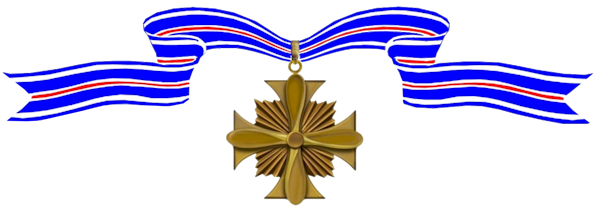Raymond Wilkins received a Silver Star for actions during the first American counteroffensive in the Pacific in April 1942, a week before the Doolittle Raid on Japan. Seven Distinguished Service Crosses were awarded to Air Crews of B-27 Flying Fortresses of the 19th Bombardment Group (H) and ten B-25 Mitchell Bombers of the 3d Bombardment Group (L), and more than 35 Silver Stars were awarded for the four-day operation. He later earned the Medal of honor in an action from which he never returned His remains were never recovered. A marker in his memory was placed at Olive Branch Cemetery in his hometown of Portsmouth, Virginia.

–
Cemetery:
Awards Received
-

Medal of Honor
-

Silver Star
-
Medal of Honor
Service:
United States Army Air ForcesRank:
Major (Air Corps)Batallion:
8th Bombardment SquadronRegiment:
3d Bombardment Group (M)Division:
5th Air ForceAction Date:
November 2, 1943
War Department, General Orders No. 23 (March 24, 1944)The President of the United States of America, in the name of Congress, takes pride in presenting the Medal of Honor (Posthumously) to Major (Air Corps) Raymond Harrell Wilkins, United States Army Air Forces, for conspicuous gallantry and intrepidity above and beyond the call of duty serving as Pilot of a B-25 Mitchell Bomber with the 8th Bombardment Squadron, 3d Bombardment Group (M), Fifth Air Force in action with the enemy near Rabaul, New Britain, on 2 November 1943. Leading his squadron in an attack on shipping in Simpson Harbor, during which intense anti-aircraft fire was expected, Major Wilkins briefed his squadron so that his airplane would be in the position of greatest risk. His squadron was the last of three in the group to enter the target area. Smoke from bombs dropped by preceding aircraft necessitated a last-second revision of tactics on his part, which still enabled his squadron to strike vital shipping targets, but forced it to approach through concentrated fire, and increased the danger of Major Wilkins’ left flank position. His airplane was hit almost immediately, the right wing damaged, and control rendered extremely difficult. Although he could have withdrawn, he held fast and led his squadron into the attack. He strafed a group of small harbor vessels, and then, at low level, attacked an enemy destroyer. His 1,000 pound bomb struck squarely amidships, causing the vessel to explode. Although anti-aircraft fire from this vessel had seriously damaged his left vertical stabilizer, he refused to deviate from the course. From below-masthead height he attacked a transport of some 9,000 tons, scoring a hit which engulfed the ship in flames. Bombs expended, he began to withdraw his squadron. A heavy cruiser barred the path. Unhesitatingly, to neutralize the cruiser’s guns and attract its fire, he went in for a strafing run. His damaged stabilizer was completely shot off. To avoid swerving into his wing planes he had to turn so as to expose the belly and full wing surfaces of his plane to the enemy fire; it caught and crumpled his left wing. Now past control, the bomber crashed into the sea. In the fierce engagement Major Wilkins destroyed two enemy vessels, and his heroic self-sacrifice made possible the safe withdrawal of the remaining planes of his squadron.
-
Silver Star
Service:
United States Army Air ForcesRank:
First Lieutenant (Air Corps)Batallion:
8th Bombardment SquadronRegiment:
3d Bombardment Group (L)Division:
Far East Air ForceAction Date:
April 10 – 14, 1942
Headquarters, Allied Air Forces in the Southwest Pacific Area, General Orders No. 18 (June 6, 1942)The President of the United States of America, authorized by Act of Congress July 9, 1918, takes pleasure in presenting the Silver Star to First Lieutenant (Air Corps) Raymond Harrell Wilkins (ASN: 0-429531), United States Army Air Forces, for gallantry in action while serving as Pilot of a B-25 Mitchell Bomber of the 8th Bombardment Squadron, 3d Bombardment Group (Light), Far East Air Force during the performance of an aerial flight against an armed enemy in the Pacific Theater of Operations. From the period 1 to 14 April 1942, First Lieutenant Wilkins participated in four highly successful bombing raids on enemy-occupied airdromes, during which 17 enemy bomber aircraft and one fighter aircraft were destroyed, as well as damage done to buildings, runways and other ground installations. During these operations Lieutenant Wilkins demonstrated grim determination, devotion to duty, and coolness in the face of danger. His gallant actions and dedicated devotion to duty, without regard for his own life, were in keeping with the highest traditions of military service and reflect great credit upon himself, his unit, and the United States Army Air Forces.


